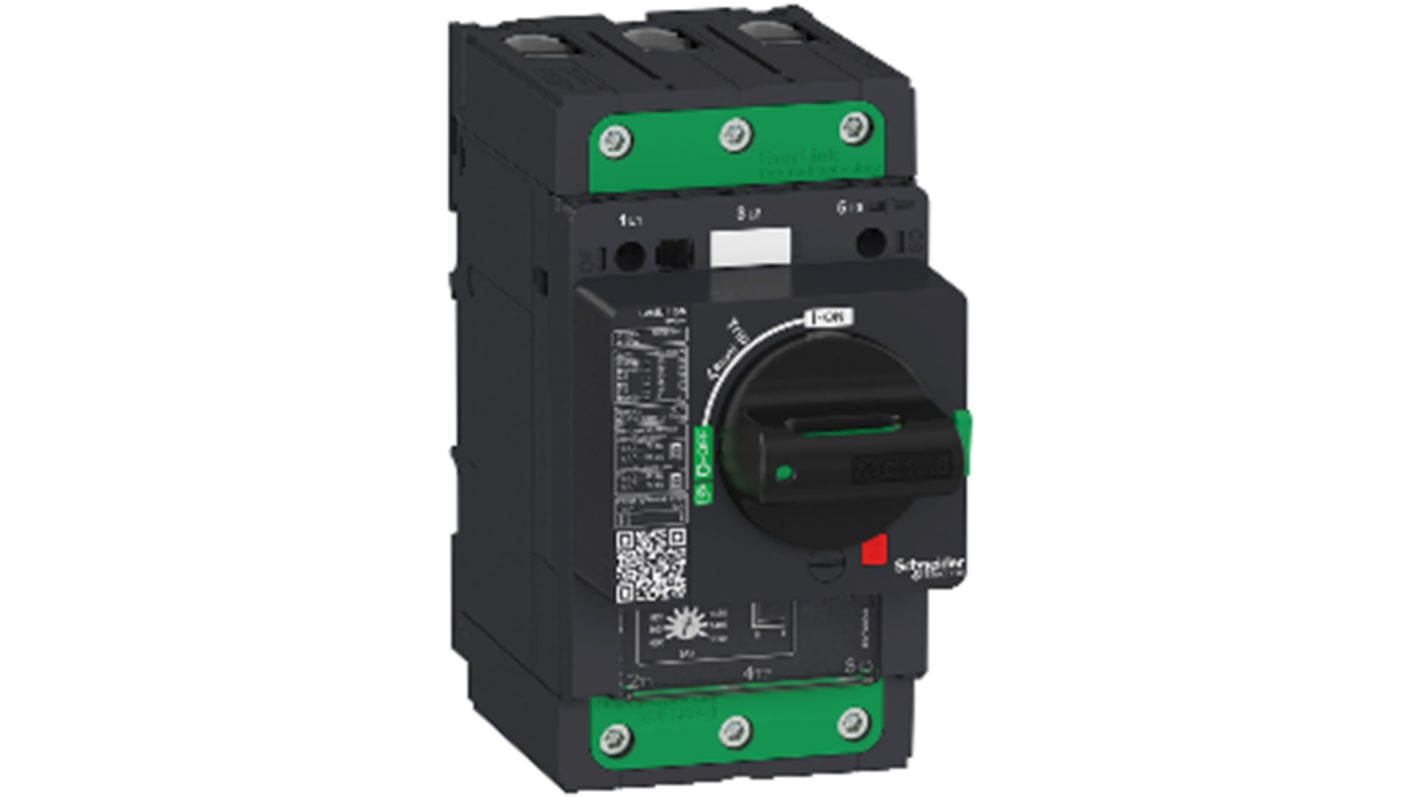Schneider Electric TeSys Thermal Circuit Breaker - TeSyS GV 3 Pole 690V ac Voltage Rating, 25A Current Rating
- RS Stock No.:
- 175-1437
- Mfr. Part No.:
- GV4L25B
- Brand:
- Schneider Electric

Subtotal (1 unit)*
£402.84
(exc. VAT)
£483.41
(inc. VAT)
FREE delivery for orders over £50.00
- Shipping from 12 January 2026
Units | Per unit |
|---|---|
| 1 + | £402.84 |
*price indicative
Better World
Our Better World range features products that make it easy for you to make a greener product choice you can trust. Click here to find out more.
- RS Stock No.:
- 175-1437
- Mfr. Part No.:
- GV4L25B
- Brand:
- Schneider Electric
Select all | Attribute | Value |
|---|---|---|
| Brand | Schneider Electric | |
| Current Rating | 25A | |
| Range | TeSys | |
| Number of Poles | 3 | |
| Voltage Rating | 690V ac | |
| Width | 165mm | |
| Series | TeSyS GV | |
| Tripping Mechanism | Magnetic | |
| Rated AC Voltage | 690V | |
| Better World Product | Yes | |
| Better World Verification | Green Premium | |
| Overall Dimensions | 81 x 165 x 155mm | |
| Overall Depth | 155mm | |
| Breaking Capacity at Maximum Voltage Rating | 10 kA @ 500 V ac | |
| Overall Length | 81mm | |
| Circuit Breaker Type | Thermal Magnetic Circuit Breaker | |
Select all | ||
|---|---|---|
Brand Schneider Electric | ||
Current Rating 25A | ||
Range TeSys | ||
Number of Poles 3 | ||
Voltage Rating 690V ac | ||
Width 165mm | ||
Series TeSyS GV | ||
Tripping Mechanism Magnetic | ||
Rated AC Voltage 690V | ||
Better World Product Yes | ||
Better World Verification Green Premium | ||
Overall Dimensions 81 x 165 x 155mm | ||
Overall Depth 155mm | ||
Breaking Capacity at Maximum Voltage Rating 10 kA @ 500 V ac | ||
Overall Length 81mm | ||
Circuit Breaker Type Thermal Magnetic Circuit Breaker | ||
- COO (Country of Origin):
- PL
b Thermal magnetic GV4P: electronic protection with wide range setting, dual class (10 & 20)
b Multifunction motor protection GV4PEM: GV4P with adjustable advanced protections and possibility to have
a side module SDx for alarming and fault differentiation.
Related links
- Schneider Electric TeSys Thermal Circuit Breaker - TeSyS GV 3 Pole 690V ac Voltage Rating, 25A Current Rating
- Schneider Electric TeSys Thermal Circuit Breaker - TeSyS GV 3 Pole 690V ac Voltage Rating, 80A Current Rating
- Schneider Electric TeSys Thermal Circuit Breaker - TeSyS GV 3 Pole 690V ac Voltage Rating, 50A Current Rating
- Schneider Electric TeSys Thermal Circuit Breaker - TeSyS GV 3 Pole 690V ac Voltage Rating, 7A Current Rating
- Schneider Electric TeSys Thermal Circuit Breaker - TeSyS GV 3 Pole 690V ac Voltage Rating, 115A Current Rating
- Schneider Electric TeSys Thermal Circuit Breaker - TeSyS GV 3 Pole 690V ac Voltage Rating, 3.5A Current Rating
- Schneider Electric TeSys Thermal Circuit Breaker - TeSyS GV 3 Pole 690V ac Voltage Rating, 2A Current Rating
- Schneider Electric TeSys Thermal Circuit Breaker - TeSyS GV 3 Pole 690V ac Voltage Rating, 12.5A Current Rating
